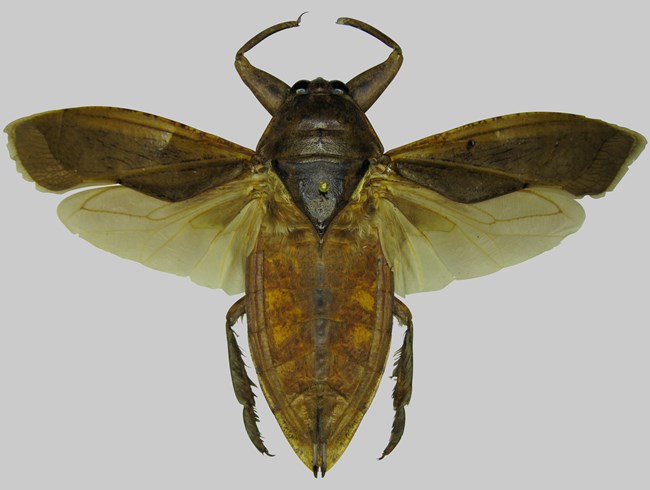Part of a series of articles titled Natural History in the National Capital Area.
Article
Natural History in the National Capital Area

Region 1- National Capital Area of the National Park Service includes a rich cultural and natural history. Parks in urbanized and fast-growing areas of the Mid-Atlantic cover Washington D.C. and parts of Maryland, Virginia, and West Virginia. Many sites include a diverse array of forests, mountains, and estuaries which support high levels of biodiversity in a narrow geographic range.
Parks are located in the Valley and Ridge region and extend east to the Fall Line, which demarcates the Atlantic Coastal Plain. Local rock reflects the tremendous tectonic forces that gave rise to the Appalachian Mountains. Dense, metamorphosed rocks underlie much of the landscape and ancient limestones have eroded into extensive karst formations.
For millions of years, the Potomac River, a prominent waterway, has shaped and reshaped the area. This river and its tributaries feed the larger Chesapeake Bay Watershed and are abundant in aquatic and terrestrial resources which are both ecologically and commercially important to this region.
The distribution and abundance of flora and fauna in the National Capital Area are inextricably connected to the ecological integrity and diversity of its habitats. Its varied physiographic features, geology and resulting soil types, topography, and climate support a range of terrestrial and aquatic environments that provide diverse habitats for wildlife and plants.
Explore
-
 ExploreNatural History Collections
ExploreNatural History CollectionsMuseum collections document the culture and natural history of an area through time.
-
 National Capital Area Parks
National Capital Area ParksThere are 86 National Park Service units, including memorials, in Region 1- National Capital Area.
-
 Biology
BiologyBiological collections include plants, fungi, insects and arachnids, reptiles and amphibians, fish, birds, mammals, and other invertebrates.
-
 Paleontology
PaleontologyPaleontology specimens are fossils of formerly living plants, animals, or naturally occurring tracks, impressions, and casts.
-
 Geology
GeologyGeological specimens include rocks, minerals, surface process samples, and soils. These specimens document the presence of geological materi
-
 Image Gallery
Image GalleryNational Capital Area National History - Image Gallery
Features
-
 Helen Shaw Fowler
Helen Shaw FowlerCivil war veteran Walter B. Shaw and his wife Luciana Miller purchased what is now known as Kenilworth Aquatic Gardens in 1879.
-
 Cherry Trees on the National Mall
Cherry Trees on the National MallMillions enjoy the Japanese cherry blossom trees of Washington D.C. when they bloom in spectacular fashion.
-
 Dr. Madison Spencer Briscoe
Dr. Madison Spencer BriscoeDr. Madison Spencer Briscoe, Storer College, and Harper’s Ferry National Historic Park
-
 Dugongs and Megalodon Sharks
Dugongs and Megalodon SharksUnexpected finds in the National Capital Area provide clues to species distribution during different points in geologic history.
-
 Maryland Mining Company
Maryland Mining CompanyCanals constructed along the Potomac River were lifelines for people living along the Potomac River from 1831-1924.
-
 National Capital Area Parks
National Capital Area ParksThere are 86 National Park Service units, including memorials, in Region 1- National Capital Area.
Last updated: May 23, 2023
